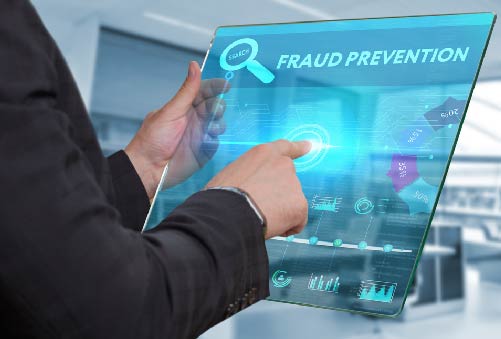Fraud Rate Decreases 22.6% Since Last Year — But Fraud Cost Per Attempt Increases 13%
- Fraud attempts are down
- At the same time, the COST of fraud has risen
- A multi-pronged tech approach by banks eliminates fraud opportunities
American Banker reports that data suggest in the beginning of 2022, the number of fraud cases being reporting has decreased from previous two years -- nearing pre-pandemic levels. While many may see this as a positive, further analysis of the data provides a stark reality: Fraud is more expensive!
The findings from TransUnion, the Federal Trade Commission, and data analysis company LexisNexis Risk Solutions suggest fraud attempts increased with the start of the pandemic but may be receding. At the same time, fraudsters are stealing more from victims with each attempt.

TransUnion’s first-quarter 2022 fraud report indicates that, across sectors:
- The suspected fraud rate decreased 22.6% globally since the first quarter of last year
- In the U.S. financial sector, it declined 56.6%
- Sectors that saw increases include insurance, gambling and logistics
The Cost of Fraud Increases
It's also reported that the leading type of fraud, imposter scams, went up every quarter from Q2 2020 to Q3 2021, from $248 million to $652 million.
During that period, the median loss from imposter scams also increased, though not as dramatically, from $800 per case to $1,000. An example of an imposter scheme is a faux romantic interest asking the victim for money, or someone claiming to be a bank employee and making false claims that the victim’s account is compromised.

Cost of fraud estimates were derived by LexisNexis Risk Solutions via surveys of risk and fraud executives at financial services and lending companies, which comprised 476 U.S.-based, and 76 in Canada. It was discovered that monthly fraud attempts against U.S. banks went up after the start of the pandemic and continued growing in 2021.
It also found the true cost of fraud per attempt increased in both periods. According to the LexisNexis Risk Solutions survey, every $1 of lost value due to fraud last year actually cost U.S. banks $4.10, which was a 13% increase since the start of the pandemic.
“Such fraud costs involve losses related to the transaction face value for which firms are held liable, plus fees/interest incurred during applications/underwriting/processing stages, fines/legal fees, labor/investigation and external recovery expenses,” the LexisNexis Risk Solutions report says. “In this case, there have been increases related to labor and external recovery support.”
Opportunistic Fraudsters
As one might expect, fraudsters look for the easiest opportunities with the greatest payouts, according to Christopher Schnieper, director of fraud and identity at LexisNexis Risk Solutions.
“This notion of fraudsters looking for different types of vulnerabilities and [opportunities for] exploitation of different organizations is something that we see,” Schnieper said. However, predicting their movements is difficult. “While we do the best we can to try to make sure that we can minimize those vulnerabilities, sometimes it can be a bit of a reactive approach.”

:
Fraudsters follow the “path of least resistance,” according to Serpil Hall and Jim Murphy, fraud specialists at the IT service management company D4t4 Solutions. And, as reported by American Banker:
...Strategy financial institutions can use to resist fraudsters is implementing anti-fraud infrastructure that allows them to react more quickly to fraud attempts, according to Tommy Nicholas, CEO of the consumer identity verification platform Alloy.
“The companies that are more likely to embrace that infrastructure level fraud prevention are financial institutions because it allows them to keep up with both compliance and the ever-changing nature of fraud attacks,” Nicholas said.
When taking into account the data, we are able to make direct correlations to what is being experienced in check fraud. Check fraud costs continue to rise -- and fraudsters continue to exploit vulnerabilities.
Fraudsters are targeting postal mailboxes and postal carriers to steal checks -- a major vulnerability within the payments process for many consumers and businesses. Once the fraudsters obtain the checks, fraudsters can easily "wash checks" or make alterations to fields such as amount and payee -- driving up the costs of fraud losses.
This is why is it is crucial for banks to deploy image-forensic AI to detect these type fraudulent checks. Combining image-forensic AI, field recognition validations, and transactional analysis systems -- such as positive pay -- helps increase the capabilities of banks to detect and stop fraud items before losses occur.

Is Orbograph working on Check Image Forensic AI that will read a check R/T and determine the Bank Logo, Bank Name and Bank Address to identify if there is a discrepancy and notify that the check is a potential fraud.?